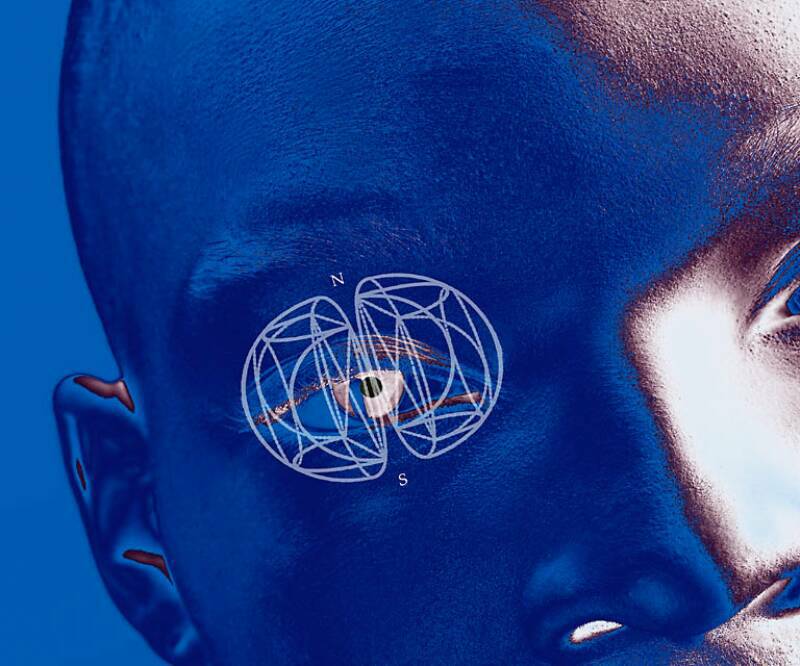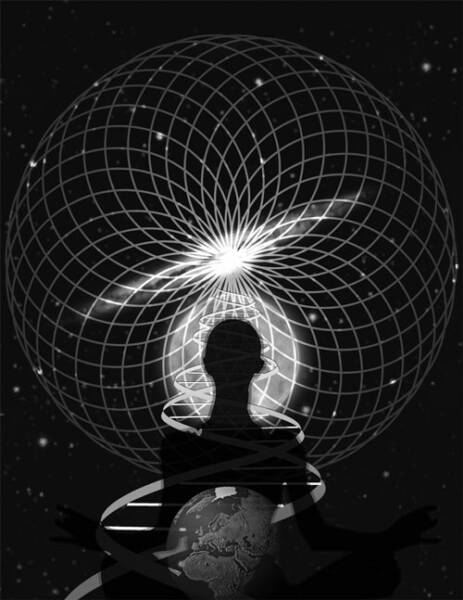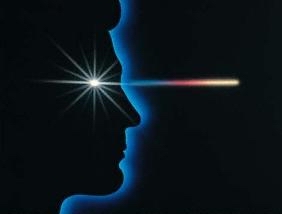
(866)-397-6939, 719-488-0548, 303-507-5169
SOUL RESEARCH INSTITUTE
What is Consciousness
Consciousness is fundamentally a "phenomenon of knowing or cognizing or experiencing an object."
Consciousness is the primary activity in any experience. Without consciousness, there is no experience.
When we see an object, there is no person who is seeing an object. Seeing is simply a phenomenon and it can be understood as “eye-consciousness.” Similarly, when we hear sound, there is no person who is hearing. Hearing is simply a phenomenon and it can be understood as “ear-consciousness.” In this way, in an ultimate sense, all experiencing such as seeing, hearing, smelling, touching, testing, and thinking/knowing can be understood as the phenomenon of consciousness.
Thus, consciousness is that activity which knows or becomes aware of an object. It itself is the act of knowing because, knowing knows; there is no knower behind knowing. Similarly, seeing sees; there is no seer behind seeing. In this way, consciousness should be understood strictly as a phenomenon that is without any doer or actor or agent performing the act of knowing or cognizing or experiencing.
How Consciousness is related to Body and Mind
Consciousness cannot exist or arise by itself. It always arises with and conditioned by the mind and matter (the body). This profound law of the universe must be understood thoroughly to remove all ignorance. For example, the “phenomenon of seeing” or “eye-consciousness” cannot occur without the presence of a physical eye and a mental eye (the desire to see) because, consciousness cannot see by itself. Otherwise, we would be able to see even through the wall since consciousness is distinct from the senses and material resistance.
Just as consciousness cannot see without the physical eye, the physical eye cannot see without consciousness, because, the eye has no thought, no volition, no desire to see, nor any way of knowing by itself. So, when consciousness arises with the support of the physical and mental eye, we are able to see.
The physical eye consists of subtle eye matter and gross eye matter. The subtle eye matter is the “eye-sensitivity” and gross eye matter is the organic eye components such as eye ball, retina, etc. This physical eye is the body. The mental eye consists of “volition” or “desire to see- the karma.” This mental eye is the mind. Thus, in order to see, the eye-consciousness has to arise along with the body (subtle and gross eye components) and the mind (the desire to see). Similarly, in order to hear, the ear-consciousness has to arise along with the body (subtle and gross ear components) and mind (the desire to hear), and so on. In other words, the three distinct phenomena of consciousness, mind, and body must arise together to constitute an experience of seeing, hearing, touching, tasting, smelling, or thinking. Consciousness, however, is the forerunner in all these activities. What I mean is that, consciousness is like a King, and, mind and body are like king’s minister and soldier, respectively. Just as a King does not go anywhere without the ministers, consciousness does not arise without mind and body.
The above slide illustrates the interdependence of Consciousness, Mind and Body & How Experience Arises out of that. The triangular red-shaded area denotes human experience. There is no experience without Consciousness-Mind-Body. All three arise together and create a human experience. It is important to understand that there is no Consciousness without Mind-Body; No Mind without Consciousness-Body; No Body without Consciousness-Mind.
The above slide illustrates "The Kingdom of SOUL." In this kingdom, Consciousness is the King, Mind is the minister, and Body is the soldier, and together they fulfill the function of SOUL.
The Flow of Consciousness
The phenomenon of consciousness is like a flow. It is like a flux, constantly arising and ceasing with such immense rapidity that it creates a false impression of continuity or permanence. When “seeing” occurs, we feel that we are seeing because of our ignorance and our false sense of continuity or permanence. This false sense of continuity or permanence creates the illusion of “I” who is seeing. This is true with everything that we experience.
When a candle is burning, the light energy arises and ceases at such rapid rate that it looks as if the candle is giving out light. It makes the candle look like the giver of light, but in fact, it is the phenomenon of arising and ceasing of light energy that is responsible for light. In this analogy, the flux of light-energy represents consciousness, and the candle along with its burnability represents matter and mind, respectively.
The flow of consciousness is like the flow of a river. The continuity of flow of water creates an illusion of one entity: the river that is flowing from one location to another. We give this illusion a name or an identity such as Nile, Ganga, or Mississipi. The reality is not the river Nile, Ganga, or Mississipi, but the flow of water. This flow is a phenomenon of coming and going of water. In this analogy, the flow of water represents consciousness and the river represents a name given to an illusion of the continuity of flow of water.
Consciousness: The Ultimate Reality Component of SOUL
Consciousness is the essence of experience. It is the ultimate irreducible component of our experience. Analytically, it is ultimate, because, our experience cannot be reduced further into subtler reality than consciousness. Whatever reality exists beyond consciousness cannot be experienced in the normal sense because it is beyond experience. Thus, the phenomenon of consciousness is an ultimate reality, or, we can say, the ultimate reality component of the SOUL. It is, however, a conditioned ultimate reality because it is conditioned by mind and matter.
Consciousness is an ultimate reality, therefore, it is the ultimate object of experience or knowledge or knowing. Beyond consciousness, there is nothing remains to be known. Consciousness is therefore the ultimate and supreme object of knowledge in an investigation.
Even though consciousness is conditioned by mind and matter, it exists by reason of its own intrinsic nature, independent of the mind and matter. That is why it is possible to know consciousness directly through experience. Hence, consciousness is the right object of knowledge in an investigation.
Knowing consciousness directly through experience means experiencing it as it is and not knowing it through reading, studying, or thinking. There is nothing else superior to experiencing the consciousness as it is, because, everything else falls in the realm of thought.
Let us try to understand this with an example.
If one is investigating the taste of mango, the “experience of mango taste” is the supreme object of knowledge in that investigation. Reading books on mango tastes, referring to encyclopedia, discussing with others and finding out that it is sweet will not bring the experience of the taste of mango. One may find out that it is sweet from various sources but that knowledge is in the realm of thought. When mango is actually eaten and its sweetness is experienced, that experience is the ultimate knowledge or supreme knowledge in this case. This experiential knowledge is beyond thought because it is simply an experience of taste. Sweetness is just a name, a verbal construction, a way of communicating the experience. The actual experience of mango taste is the ultimate reality. Once the actual taste is experienced, there is nothing remains to be investigated in this case. Therefore experiential knowledge is always the ultimate and purest of all knowledge.
The experiential knowledge of mango taste in this example is nothing other than the phenomenon of consciousness. You may call it “taste-consciousness” or anything else. The point I am trying to make is this: Any knowing, knowledge, cognition, or experience is essentially a phenomenon of consciousness, and it is the ultimate reality.
There is no “experiencer” behind the experience. The experience is simply the arising and ceasing of consciousness in extreme rapidity. If we feel that we are tasting the mango, then we are actually creating the “I” - the ego. This feeling of “I-ness” occurs because of not knowing that the experiencing of taste is simply a “taste-consciousness.”
When the feeling of “I-ness” occurs many times over, it becomes a volitional formation, a mental pattern, a deep mental impression, a memory, a karma, which, in turn, conditions the consciousness unwholesomely and unprofitably. Therefore, all genuine spiritual practices should primarily focus on the removal of the “I-ness” or ego. This removal process is the process of purification which ultimately leads to the understanding and experiencing of SOUL.
Consciousness is not a being or an entity which performs the act of knowing. It is not some universal mighty intelligence or some almighty figure in the conventional sense. It is simply a “phenomenon” of cognition; experience; awareness. Always understand consciousness as a phenomenon, as a flow, like the flow of a river, and, not as a fixed entity.
Types of Consciousness
Consciousness is first and foremost “the phenomenon of experience.” However, depending upon the uniqueness, the utility, the manifestation, and the immediate cause of the experience, we can say that there are many kinds of consciousness. For example, we used the term ‘eye-consciousness” for “the experience of seeing” because, this experience is uniquely functional and manifested as vision due to the proximity of our embodiment to the objects of vision. Similarly, we can say that there are many types of consciousness (such as good or bad) depending upon the nature of the mind that arises with it. For example, if the nature of your mind is hateful, then the consciousness that arises in you would be unwholesome-consciousness, or, you can say bad-consciousness. If the nature of your mind is compassionate, then the consciousness that arises in you would be wholesome-consciousness, or, you can say good-consciousness. So, depending upon the ethical quality of the mind which arises with consciousness, we can have many different types of consciousness.
The above slide illustrates types of Consciousness and their relationship with Subconsciousness. There are four primary types of consciousness and their sub-types that partake in the phenomenon of cognition. Note that there is no one-single-consciousness but many.
Considering the uniqueness, the utility, the manifestation, and the immediate cause of our experience, we can say that there are four primary types of consciousness that ultimately give rise to 121 types of consciousness:
1. Unwholesome Consciousness:
Consciousness which arises with unwholesome mind is unwholesome consciousness. It is rooted in one or more of the unwholesome mental elements of greed and hatred with delusion being the underlying root. It is unwholesome because it adversely impacts the wholesomeness of experience thereby inflicting pain and suffering. It is unwholesome because it generates unwholesome volition.
Unwholesome Consciousness can be sub-classified as:
a. Greedy-Consciousness: Consciousness predominantly rooted in Greed. Examples- Selfishness, passion, lust, attachment of all kinds, indifference, sensual pleasures, unwholesome joy, convictions, beliefs, etc.
b. Hateful-Consciousness: Consciousness predominantly rooted in Hatred: Examples- Displeasures and aversion- the entire range starting from minor irritation, resistance, negativity up to violent anger.
c. Deluded-Consciousness: Consciousness predominantly rooted in Delusion. Examples- Impatience, agitation, skepticism, indecisiveness, indifference, brazenness, laziness, etc.
2. Wholesome Consciousness:
Consciousness which arises with wholesome mind is wholesome consciousness. It is rooted in one or another of the wholesome mental elements of Non-greed, Non-hatred and Non-delusion (see Chapter III, page no. for details). It is wholesome because it generates wholesomeness of experience thereby bringing happiness, joy and bliss. It is wholesome because it generates wholesome karma and merit.
Wholesome consciousness can be sub-classified as:
a. Non-Greedy-Consciousness: Consciousness predominantly rooted in Non-greed. Examples- Pleasantness, joy, generosity, sympathy, empathy, Letting go, non-craving, non-clinging, detachment, unselfishness, renunciation, dispassion, contentment, effacement, happiness, wealth, etc.
b. Non-Hateful-Consciousness: Consciousness predominantly rooted in Non-hatred. Examples- Meditative absorptions with feeling of focus, thinking, energy, delight, happiness, bliss, concentration, loving-kindness, patience, forbearance, equanimity, sociability, agreeableness, amity, gentleness, friendliness, calmness, softness, coolness, pleasantness, etc.
c. Non-Deluded-Consciousness: Consciousness predominantly rooted in Non-Delusion. Examples- Expanded consciousness, spaciousness, oneness, infiniteness, excellence, freedom, non-confusion, pure understanding, pure knowledge, wisdom, clear comprehension, purified views, mental perfection, sainthood, holiness, egolessness, etc.
3. Resultant Consciousness:
Consciousness which arises due to fruition of stored-up karma is the resultant consciousness. It is comprised of the results of both wholesome and unwholesome karmas, however, it, in itself, is neither unwholesome nor wholesome. It simply arises with the ripened karma. It is basically the experience of the maturation of karma.
Resultant consciousness can be sub-classified as:
a. Sense-Consciousness: Consciousness predominantly rooted in wholesome and unwholesome karma resultants. Examples- Eye-consciousness (seeing), Ear-consciousness (hearing), Nose-consciousness (smelling), Tongue-consciousness (tasting), Body-consciousness (experience of touch).
b. Receiving-Consciousness: This consciousness arises immediately after the sense consciousness, receives the object of experience and apprehends it. For example, once an object is seen by the Eye-consciousness, it is immediately received and apprehended by Receiving-consciousness.
c. Investigating-Consciousness: This consciousness arises immediately after the Receiving-consciousness in order to investigate the apprehended object. For example, once an object is seen by the Eye-consciousness, it is immediately received and apprehended by Receiving-consciousness, and then immediately investigated and examined by the Investigating-consciousness.
d. Registering-Consciousness: This consciousness arises immediately after the mental action (function of volition) is completed in order to register the generated karma (see pg. no. for details). In other words, this consciousness is responsible for creating memories, impression, stored-up karma, etc.
e & f. Rebirth-Linking-Consciousness and Death-Consciousness: This type of consciousness arises at the moment of conception (rebirth) and at the moment of death. It is the manifestation of subconsciousness (see pg. no. for details).
4. Functional Consciousness:
Consciousness which is none of the above three (unwholesome, wholesome, or resultant) is called the functional consciousness.
Whenever an external object impinges upon a sense faculty, the functional-consciousness arises before the arising of the particular sense-consciousness. For example, when a visible object impinges upon the eye, the functional consciousness arises to simply enable the Eye-consciousness to see the object. This consciousness is simply functional. It neither performs any sensual act of seeing, hearing, smelling, tasting, and touching nor cognizes the object because it is too weak for that.
Because functional consciousness is neither related to any mental action (present karma) nor to any memories (stored-up karma), it is beyond the realm of karma. It does not have the power to generate karma. It performs an activity of referring but it is not potent enough to become a mental action or volition.
Functional-consciousness can be sub-classified as:
a. Sense-Enabling-Consciousness: It enables the Sense-Consciousness (five senses) to see, hear, smell, taste, and touch an object by referring it to the sensuality, sense object, sense field, and attention. For example, an Eye-Consciousness is enabled by this Sense-Enabling Consciousness by referring it to eye-sensitivity, visible object, light, and attention. Similarly, an Ear-Consciousness is enabled by this Sense-Enabling-Consciousness by referring it to ear-sensitivity, sound, space, and attention…and so on.
Basically, the Sense-Enabling-Consciousness facilitates the meeting between the external and internal worlds; or, we can simply say that it facilitates the meeting of consciousness, mind, and matter.
b. Heart-Enabling-Consciousness: It enables the mind-consciousness (the sixth sense) by referring it to mind-sensitivity, mental objects (eg. thought), mind-field (stored-up karma/subconsciousness), and attention. Note that the Sense-Enabling-Consciousness only enables the five senses and Heart-Enabling-Consciousness enables the sixth sense.
c. Determining Consciousness: It enables the mind-consciousness to determine the object that has been cognized by the sense-consciousness. This consciousness generally arises after the Investigating-Consciousness and generally completes the investigation or discrimination phase of cognition.
The above classification is a simple way of classifying the consciousness in order to prepare the grounds for understanding the dynamics of consciousness. The above classification is a basic, fundamental classification. By that, what I mean is that the unwholesome, wholesome, resultant, and functional consciousness are not strictly that. It cannot be so. For example, a wholesome-consciousness can be a wholesome-resultant or wholesome-functional-consciousness, and so on.
Thus, considering various combinations of the above mentioned four basic kinds, various other kinds of consciousness (up to 121) can be derived. The only exception is that the wholesome and unwholesome consciousness cannot be combined.
Whatever classification there may be, the most important thing to understand is that there is no one single-consciousness. There is no one permanent-universal-consciousness, or almighty-father-consciousness, or universal-mother-consciousness, or eternal-consciousness. Many different types of consciousness arise and pass away rapidly thereby creating the phenomena of continuous existence. However, all types of consciousness arise and pass away only in the fixed order through the principle of conditionality. We will talk about that later when it is appropriate.
Subconsciousness
Besides the four basic types of consciousness, there is subconsciousness.
I am mentioning it separately, because, it is not exactly consciousness but the "potentiality" of consciousness. Subconsciousness can also be understood as the mind-field, karma-field, or life-continuum since it is made up of stored-up karma, memory, mental impressions, reactions, etc.
Subconsciousness is closely related to resultant-consciousness but not same as that. It is more like a resultant-state of consciousness. It is a state, meaning, it is a potentiality; it is seed-like. It does not become consciousness until it gains enough strength through conditionality.
Subconsciousness is always operational but it is subservient to consciousness. That is why it is called subconsciousness. The most important thing to understand is that subconsciousness is not a static, permanent, or eternal entity (personal or individual SOUL, jiva, life, etc). It is a resultant and dynamic state which arises whenever no other consciousness is present, and ceases when another consciousness intervenes. Subconsciousness and consciousness do not exist at the same time.
For example, in a state of dreamless sleep, when there is no consciousness/mind arising, the existence is upheld or fueled by the flow of subconsciousness. As soon as another consciousness arises in the form of a dream or thought, the flow of subconsciousness is interrupted.
As we have already discussed, the body and mind cannot arise or survive without consciousness. So, whenever there is no new karmic activity or no cognitive activity (meaning no consciousness), subconsciousness arises and ceases rapidly to sustain the flow of existence. In this way, subconsciousness serves as the life-continuum: the undercurrent of our existence. Subconsciousness is like the fuel (energy) for the continuity of existence. It flows on continuously like a stream, burning up in a passive manner, thereby running the vehicle of existence.
In a state of deep meditation or mental absorption, an enlightenment master is sustained by the flow of subconsciousness, because, in such mental state, there is no new karmic activity. Such moments of passive existence also occur a few times during the gaps in the active existence of our daily life.
Birth and Death Consciousness
During the course of continuous existence, subconsciousness manifests itself in a significant way by linking the end of one existence with the beginning of another. In the womb of creation, it manifests as “Rebirth-Linking-Consciousness” at the moment of conception (birth or rebirth). Thus, the new existence begins with the arising of Rebirth-Linking-Consciousness. It is the first consciousness that begins the new span of existence of body-mind-consciousness.
Similarly, subconsciousness manifests as “Death-Consciousness” which is the last consciousness that ends the current span of existence. Thus, any one span of existence begins with “Rebirth-Linking-Consciousness” and ends with “Death-Consciousness.” Since the moments of birth and death are manifestations of subconsciousness, they are absolutely passive. Nothing can be done to directly or actively change or modify the moments of birth and death because they do not fall in the realm of activity. No matter how powerful, no matter how mighty, no matter how enlightened a person may be, nothing can be done about the moments of birth and death! In other words, there is no such thing as a person taking a birth and then dying. Birth and death are simply the phenomena of consciousness.
Basically, not only birth and death are the phenomena of consciousness, but, everything else is.
Everything in the realm of experience or existence is the phenomena of consciousness, or, to be precise, the phenomena of body-mind-consciousness, because consciousness cannot arise without the mind-body.
Dynamics of Consciousness: Cognitive Process of the SOUL
Our daily lives are nothing more than bunch of cognitive processes that are constantly occurring as a result of the dynamics of consciousness. Let me explain what I mean by that.
A cognitive process is that by which we experience and know this world. There are primarily six types of cognitive processes: seeing, hearing, smelling, tasting, touching, and knowing. The first five are connected with five sense-consciousnesses and the sixth one is connected with mind-consciousness. These cognitive processes occur only when essential conditions of matter-mind-consciousness are present.
In other words,
We can see only if there is:
Matter: The organic eye, eye-sensitivity, visible object, and light
Mind: The element of attention
Consciousness: The Eye-Consciousness.
We can hear only if there is:
Matter: organic ear, ear-sensitivity, sound, and space
Mind: The element of attention
Consciousness: The Ear-Consciousness.
We can smell only if there is:
Matter: Organic nose, nose-sensitivity, odor, and air element
Mind: The element of attention
Consciousness: The Nose-Consciousness.
We can taste only if there is:
Matter: Organic tongue, tongue-sensitivity, flavor, and water element
Mind: The element of attention
Consciousness: The Tongue-consciousness.
We can feel the touch only if there is:
Matter: organic body, body-sensitivity, tangible data, earth element
Mind: The element of attention
Consciousness: The Body-consciousness.
We can know or think or perceive only if there is:
Matter: The subtle-heart (mind-sensitivity)
Mind: The element of subconsciousness (Karma)
Consciousness: Sense-enabling, receiving, investigating, determining, wholesome, unwholesome, and registering consciousness (collectively known as the mind-consciousness).
The act of knowing is somewhat different from the other five sensual ones. It functions independent of five physical senses. However, it takes the same object as that taken by the five senses.
Any one of the five sensual acts is not complete unless it is immediately succeeded by the act of knowing. Thus, in any experience we go through, the five-sense consciousness are always succeeded by the mind-consciousness to complete the entire cognitive process.
Let us now look at a real life example so we can understand how the cognitive process takes place.
Let us say, you are looking at a flower. Moments before you do the act of looking, if there is no other activity, there is a continuous flow of subconsciousness that sustains your existence. The moment you look at the flower - a visible object, it impinges upon the eye. At that very moment the subconsciousness is vibrated and arrested. Then, a Sense-Enabling-consciousness arises and ceases by referring the visible object (the flower) to the Eye-Consciousness. This is immediately followed by the arising and ceasing of Eye-Consciousness which simply sees the object. Then, Receiving-Consciousness arises and ceases to receive the seen object. After that, an Investigating-Consciousness arises and ceases to investigate the received object. This is followed by the Determining-Consciousness which arises and ceases to discriminate, determine, and perceive the investigated object as flower. As soon as the process of discrimination is completed, there is an impulsion for action (volition) or reaction which may lead to either plucking the flower or to simply enjoying its beauty. This is the climax of the cognitive process, because, at this stage, the mental action or reaction occurs. This mental action/reaction is nothing but the arising of either Wholesome-or-Unwholesome-Consciousness depending upon how the object was perceived – whether with greed or non-greed. This is the moment when mental phenomena of “choice” or “Karma” occur (see pg. no. for details). The Wholesome-or-Unwholesome-Consciousness is primarily responsible for generating Karma.
Once the Wholesome-or-Unwholesome Consciousness has performed its function, a Registering-Consciousness arises and ceases to register the generated karma, thereby facilitating the creation of memories, impression, stored-up karma, etc. The Registering-Consciousness is then followed by the arising of subconsciousness again, if no other consciousness arises at that moment. Thus, the cognitive process subsides and ends with the arising of subconsciousness until the next episode begins.
In summary, the entire cognitive process of ‘seeing the flower’ follows the following fixed order of consciousness. Just as ‘seeing,’ all other cognitive processes (hearing, smelling, tasting, touching) occur in the same manner of the fixed order of consciousness.
The above slide ilustrates the Dynamics of Consciousness: The Cognitive Process of the SOUL. All cognitive processes (such as seeing, hearing, tasting, smelling, and touching) follow the fixed order of consciousness as shown here. This is how the SOUL cognizes and experiences everything.
What’s the Point of knowing all this?
Understanding the cognitive processes is necessary to familiarize ourselves with what is going on in the inside world at a very intimate level. Such understanding leads to the following profound realization:
1. There are so many different types of consciousness partaking in the acts of experiencing the world. There is no single-consciousness that is performing all the functions. Different functions are performed by different consciousness. There is really no single fixed entity such as an individual SOUL but there is only SOUL – an impersonal phenomenon of body-mind-consciousness. There is no Creator-Father-consciousness or Creator-Mother-consciousness or Universal-consciousness or Unified-consciousness that perform the cognitive processes. There is only SOUL – a phenomenon (and not an entity) that creates or experiences by virtue of many different types of consciousness that arise in dependence of the mind and body.
2. Each preceding consciousness is conditioning by the proceeding consciousness for its occurrence. Thus, any act of experience, any act of cognition or knowing is just a process by virtue of conditional interdependence and there is nothing inside or outside of this process. There is no Controller or Overlord or Almighty Father who rules or guides this process. The process goes on by itself.
3. Each consciousness arises and passes away, paving the way for the next consciousness to arise, which also does the same thing. There is really no permanent entity here. Even subconsciousness arises and passes away like other consciousness. So, even consciousness (or subconsciousness) is not eternal. Everything is really momentary and impermanent. Nothing really exists forever except the order of the process (the Law) itself.
4. In the whole cognitive process, there is really no cognizer, no “I.” There is no being, no person who is performing the function of cognition. There is no knower in the act of knowing. There is no thinker behind thoughts. It is all just a dance of consciousness.
5. Ultimately, what is eternal is only the Law: The fixed order of the occurrence of consciousness, the Law of conditionality, and the Law of interdependence.
Such realization (1 to 5 above) brings profound transformation. The grip of the individual-SOUL-delusion, Overlord-delusion, Self-delusion begins to loosen up. The mental blindness begins to fade away. Rigid beliefs, dogmas, convictions begin to dissolve, thereby opening up the wisdom faculty. The more we establish ourselves in this realization- the realization of the dynamics of consciousness, the more non-reactive and wise we become. With regular practice of such review, reflection, and contemplation, we develop the attitude of detachment and dispassion, which eventually results in real peace and happiness.
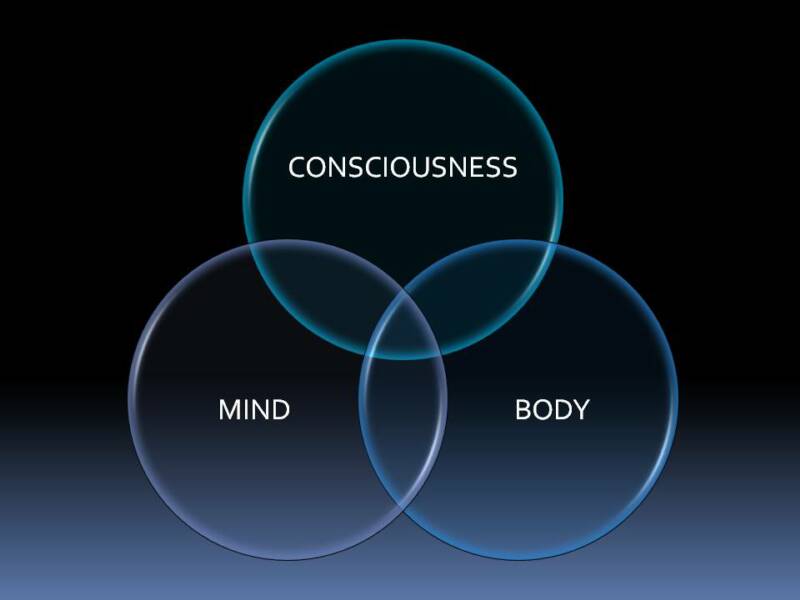
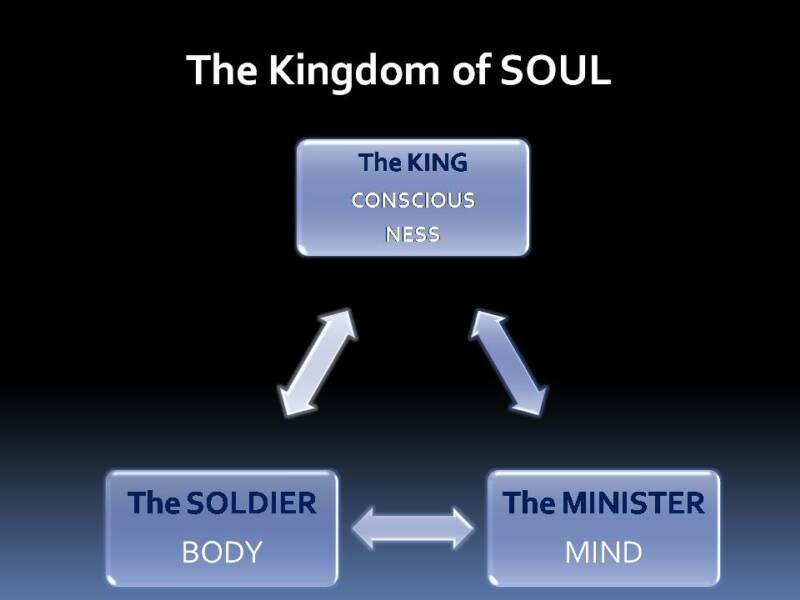
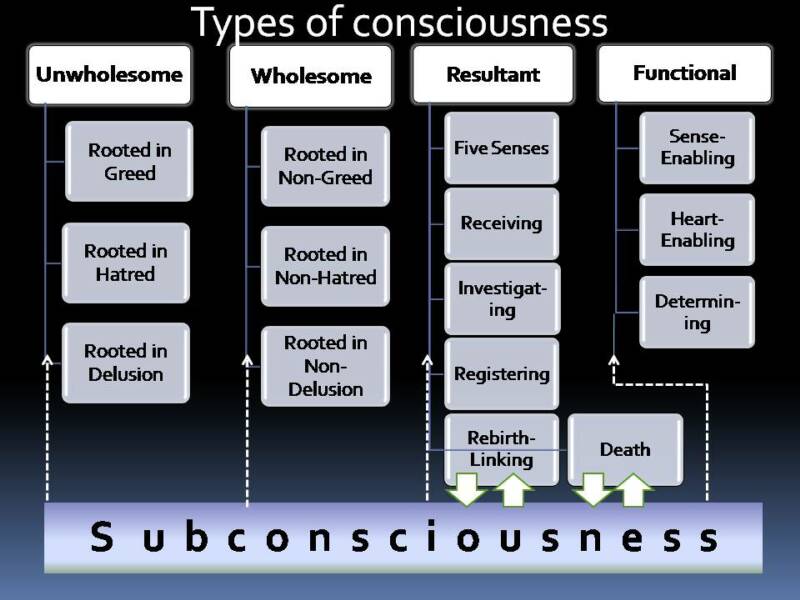
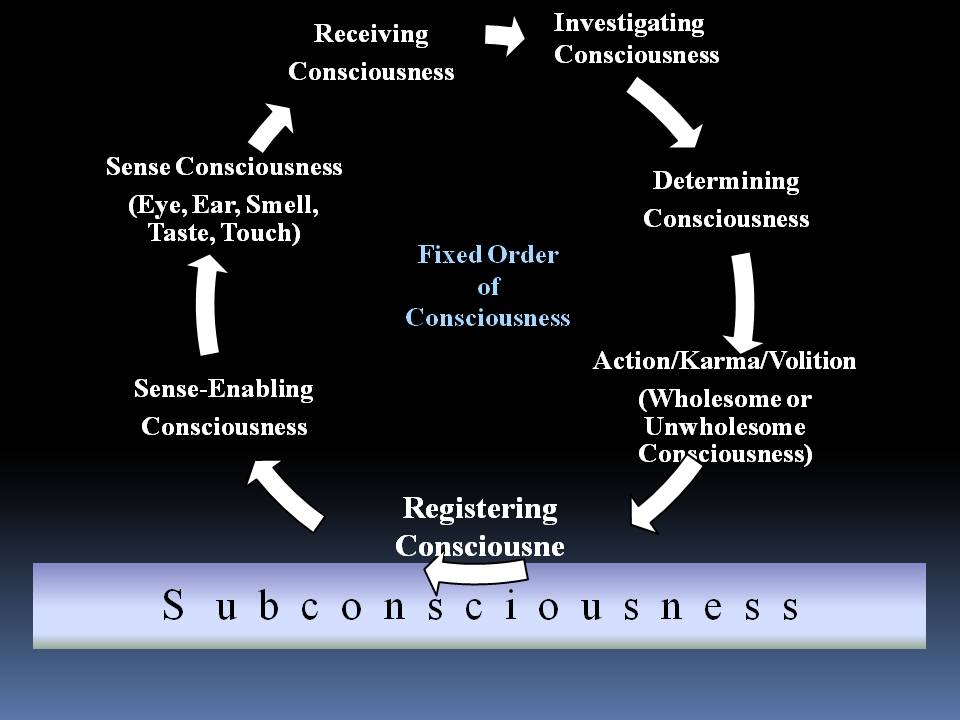
SEARCH

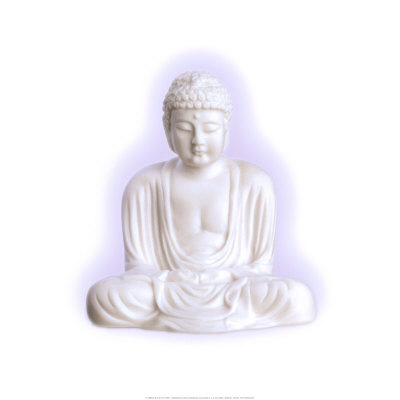
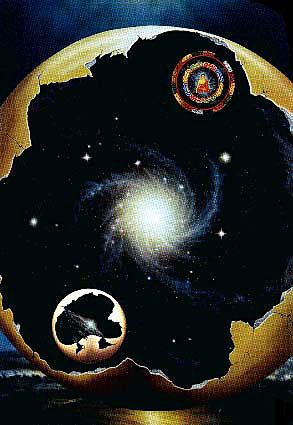
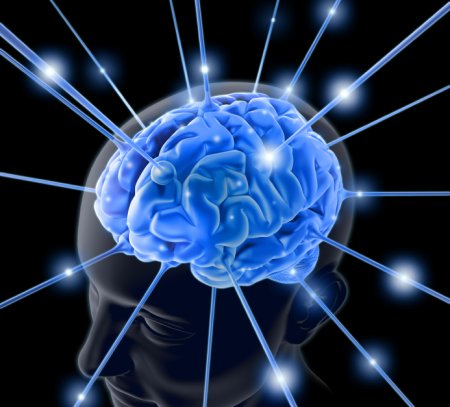
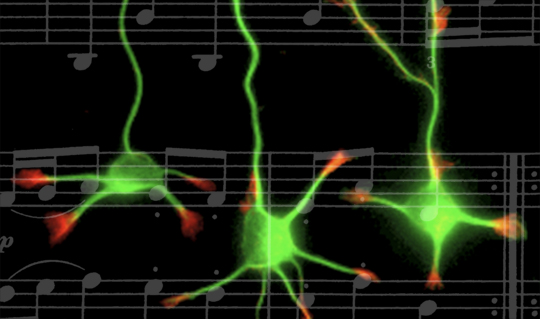
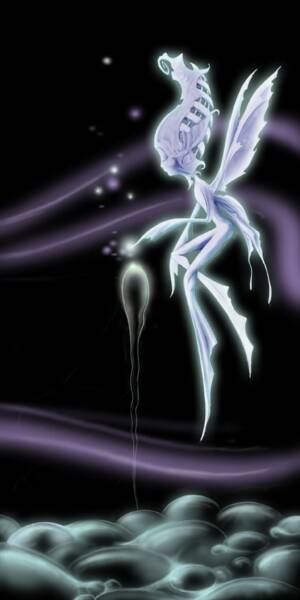
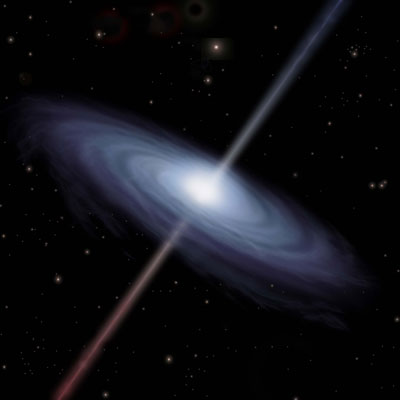
CONSCIOUSNESS
(See List Below)
I. Unwholesome
Consciousness
(Rooted in Greed)
No. 1
No. 2
No. 3
No. 4
No. 5
No. 6
No. 7
No. 8
(Rooted in Hatred)
No. 9
No. 10
(Rooted in Delusion)
No. 11
No. 12
II. Wholesome
Consciousness
(Rooted in
Non-Greed &
Non-Hatred)
No. 13
No. 14
N0. 15
No. 16
(Rooted in
Non-Greed,
Non-Hatred, &
Non-Delusion)
No. 17
No. 18
N0. 19
No. 20
(Mental
Absorptions)
No. 21
No. 22
N0. 23
No. 24
No. 25
No. 26
No. 27
No. 28
No. 29
(Purification &
Liberation)
No. 30
No. 31
N0. 32
No. 33
No. 34
No. 35
No. 36
No. 37
No. 38
No. 39
No. 40
No. 41
No. 42
No. 43
No. 44
No. 45
No. 46
No. 47
No. 48
No. 49
III. Resultant
Consciousness
(Resulting from
Unwholesome
past KARMA)
No. 50
No. 51
No. 52
No. 53
No. 54
No. 55
No. 56
(Resulting from
Wholesome
past KARMA,
Rootless)
No. 57
No. 58
No. 59
No. 60
No. 61
No. 62
No. 63
No. 64
(Resulting from
Wholesome
past KARMA,
Rooted)
No. 65
No. 66
No. 67
No. 68
No. 69
No. 70
No. 71
No. 72
(Resulting from
Mental Absorption)
No. 73
No. 74
No. 75
No. 76
No. 77
No. 78
No. 79
No. 80
No. 81
(Resulting from
Purification &
Liberation)
No. 82
No. 83
No. 84
No. 85
No. 86
No. 87
No. 88
No. 89
No. 90
No. 91
No. 92
No. 93
No. 94
No. 95
No. 96
No. 97
No. 99
No. 99
No. 100
No. 101
IV. Functional
Consciousness
(Rootless)
No. 102
No. 103
No. 104
(Wholesome
Karma-less,
Enlightened)
No. 105
No. 106
No. 107
No. 108
No. 109
No. 110
No. 111
No. 112
(Mental Absorption,
Enlightened)
No. 113
No. 114
No. 115
No. 116
No. 117
No. 118
No. 119
No. 120
No. 121
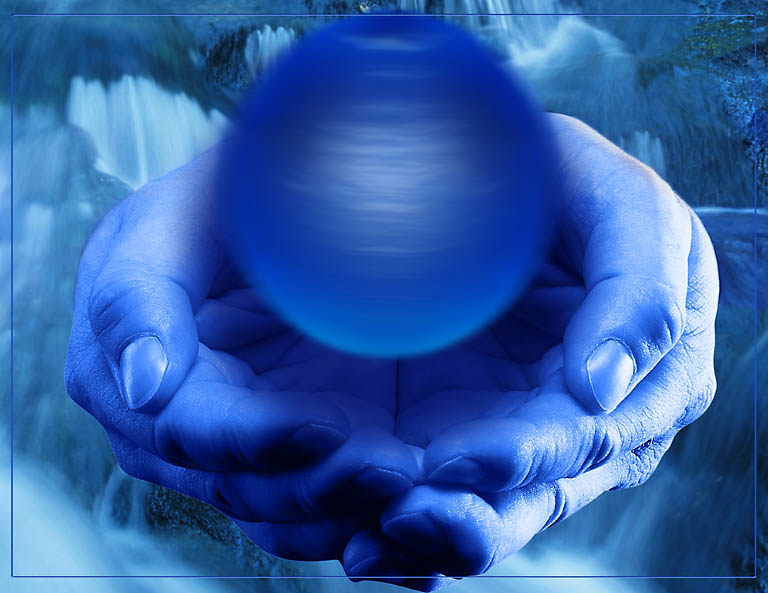

Copyright 2008 SOUL Research Institute
C
